Botanical Pavilion
Japanese architect Kengo Kuma and Australian artist Geoff Nees have created a tactile, circular pavilion using timber collected from Melbourne’s Royal Botanic Gardens. Botanical Pavilion slots together like a puzzle without the need for metal supports.
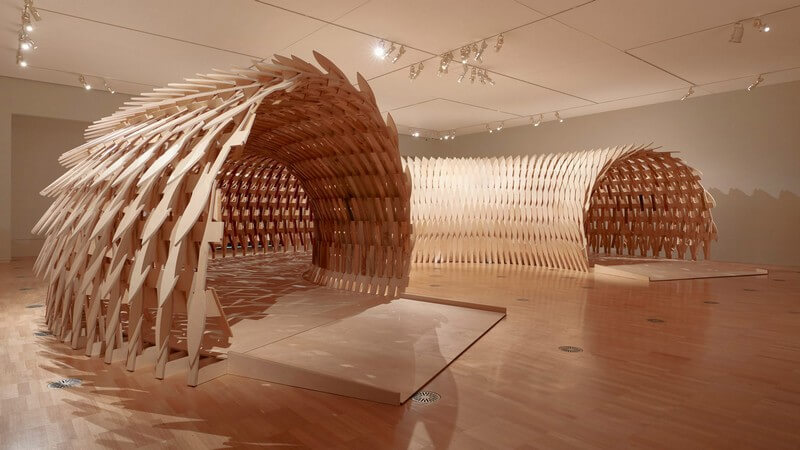
Kuma and Nees’s design was commissioned for the NGV Triennial in response to Korean artist Lee Ufan’s 2017 painting named Dialogue. The softly curving pavilion sits in front of the painting, framing it through its openings at both ends.
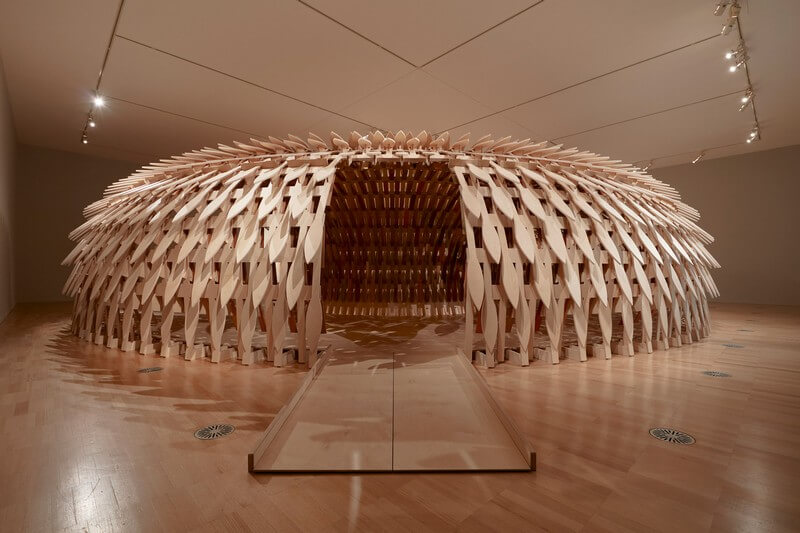
The aim of the pavilion was to give new life to the “beautiful but unused wood” cut from the trees of Melbourne’s Royal Botanical Gardens. Kuma and Nees collected timber from trees that had been felled or removed over several years, some of which pre-date European settlement, and used it to create the tessellated pavilion.
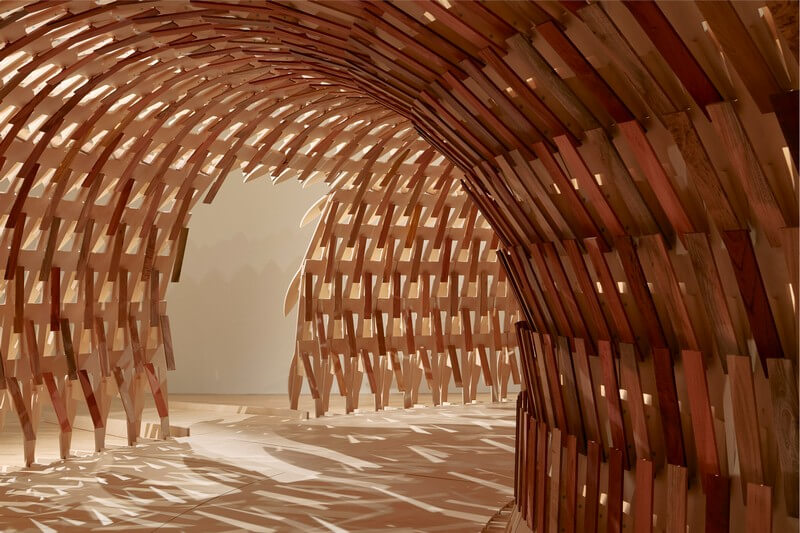
Kuma’s approach to the design was derived from the Japanese carpentry tradition, in which you use smaller elements and rely on joinery to achieve larger spans. The semi-circular shape of the pavilion invites the visitor into a journey to explore the space and experience the various essences of wood.
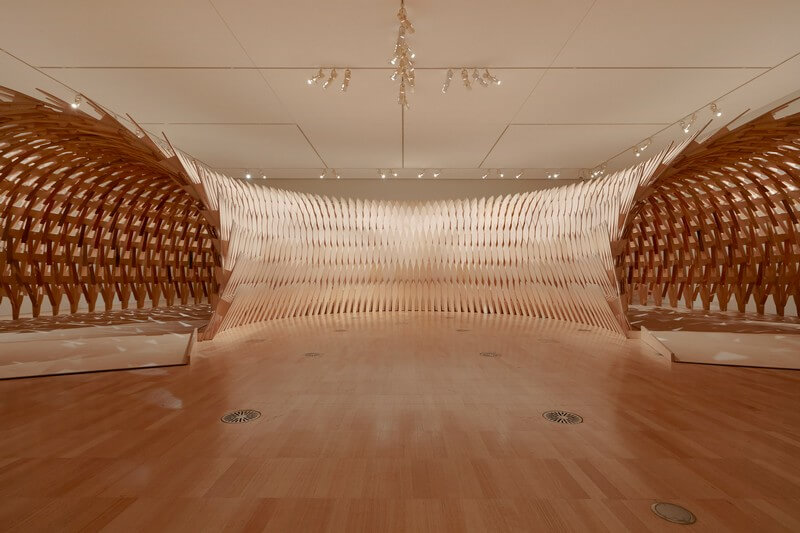
The porous structure is assembled like a tridimensional puzzle without the use of metal connections to be able to reassemble it in a different location. Traditionally, Japanese carpenters would use timber of different ages for different purposes. In a similar way the Botanical Pavilion, displaying the timber instead of burning it, aims to raise awareness to the beauty and quality of this material and the multiple uses it can have throughout its life cycle.
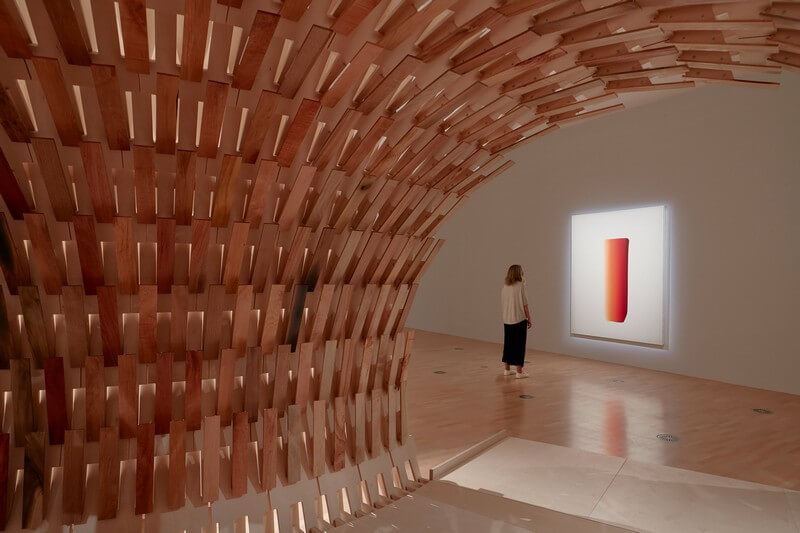
While all the trees come from the same park, the architect used different species to construct the pavilion. These were sorted through colour coding.
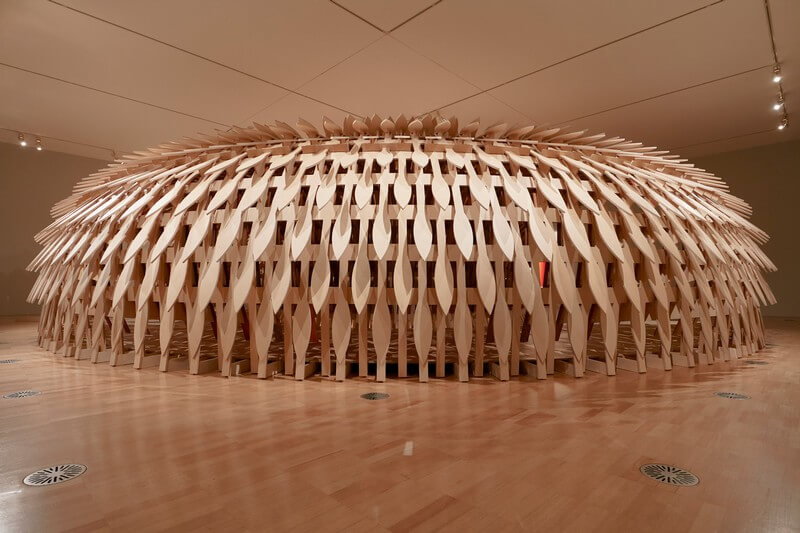
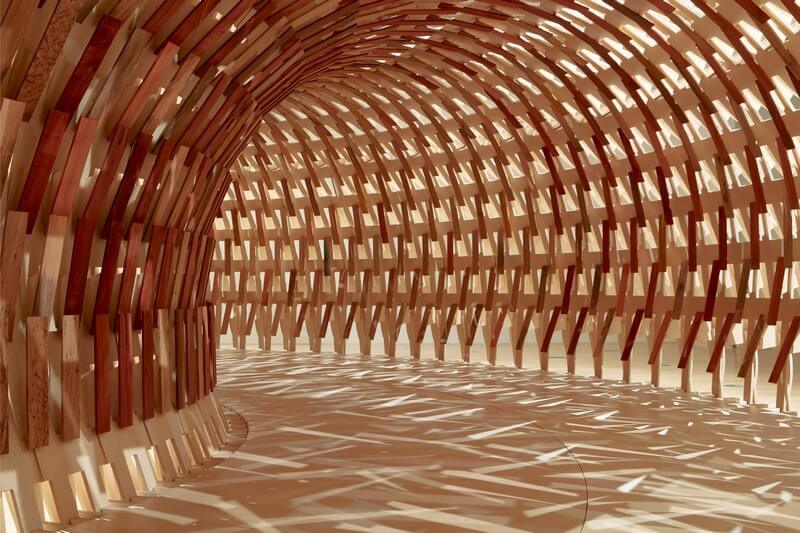




























Comments